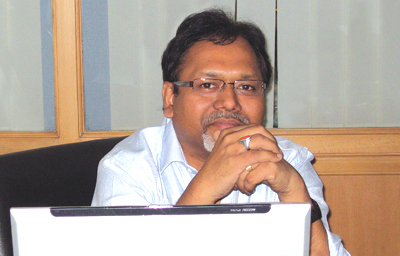INDIAN ARMED FORCES CHIEFS ON OUR RELENTLESS AND FOCUSED PUBLISHING EFFORTS

The insightful articles, inspiring narrations and analytical perspectives presented by the Editorial Team, establish an alluring connect with the reader. My compliments and best wishes to SP Guide Publications.

"Over the past 60 years, the growth of SP Guide Publications has mirrored the rising stature of Indian Navy. Its well-researched and informative magazines on Defence and Aerospace sector have served to shape an educated opinion of our military personnel, policy makers and the public alike. I wish SP's Publication team continued success, fair winds and following seas in all future endeavour!"

Since, its inception in 1964, SP Guide Publications has consistently demonstrated commitment to high-quality journalism in the aerospace and defence sectors, earning a well-deserved reputation as Asia's largest media house in this domain. I wish SP Guide Publications continued success in its pursuit of excellence.
A Word from Editor

The MMRCA deal brings with it a staggering 50 per cent of the mammoth $15- 20 billion deal which should come as a boon to the Indian aviation industry – both, public and private – in terms of high technologies’ infusion
Finally, the winner is out. On January 31, in spite of its preoccupations with the assembly elections in many states, the UPA Government took a bold and much awaited decision to announce the L1 (lowest bidder) in the closely contested fight between the two finalists, French Dassault Rafale and the European Eurofighter Typhoon. And the winner is the ‘Rafale’. For Dassault Aviation, India’s selection of the Rafale is not only perceived as a sweet vindication of sorts but also, quite literally, the ‘Kiss of Life’. Earlier, Dassault had felt slighted by India’s decision to go for a global tender, when the Indian Air Force (IAF) had expressly stated at the turn of the last millennium it wanted more Mirage 2000 fighter jets. Winning the race enables Dassault to also open Rafale’s export account, albeit belatedly, which had the global aerospace industry baffled for years over its lack of commercial success.
Not surprisingly, the declaration of the winner elicited mixed responses ranging from utter joy in the winning camp to gloom and despair for the losing side. On the political front, while the French government of President Sarkozy expressed its delight, the British showed their disappointment with Prime Minister David Cameron stating that he would request the Indian Government to reconsider its decision. But, the Indian Defence Minister A.K. Antony has been candid in his statements that technical and financial merits will not be overruled by geopolitical considerations in the MMRCA deal.
Be that as it may, it is hoped that the remaining issues of the deal are sorted out expeditiously and the contract inked during the early months of the financial year 2012-13. It would kick-start the time clock for the IAF to be able to receive the first batch of “off-the-shelf” 18 aircraft to form its first MMRCA squadron in 2015-16. It is also hoped that the IAF would exercise its option for more aircraft in the near future to enable it to ultimately raise about 10 MMRCA squadrons. It would certainly help the IAF regaining the ‘numeric’ vis-à-vis its highly depleted combat aircraft strength. But that is not all. The MMRCA deal brings with it a staggering 50 per cent of the mammoth $15-20 billion deal which should come as a boon to the Indian aviation industry – both, public and private – in terms of high technologies’ infusion. In selecting the new technologies, perhaps the IAF – the most affected service in the field of military aviation – could take the lead in identifying key technologies that would help the indigenised aviation industry provide it with weapon systems and platforms in future to boost its operational capabilities. It would be sinful to forget that, the very reason for which India has opted to spend astronomical amounts of foreign exchange for the MMRCA deal is to acquire, absorb and, indigenise as much of the high technologies that come with the ‘offset’ programmes of this landmark acquisition. India simply cannot afford to throw away this once-in-a-lifetime opportunity to stand on its own feet.
Lastly, do visit us at the upcoming ‘India Aviation 2012’ at Hyderabad (March 14-18) and later, at the Delhi ‘Defexpo India 2012’ (March 29-April 1) where, incidentally, we will also be the proud, sole and exclusive official media partner.
In the meantime, Happy Reading.





